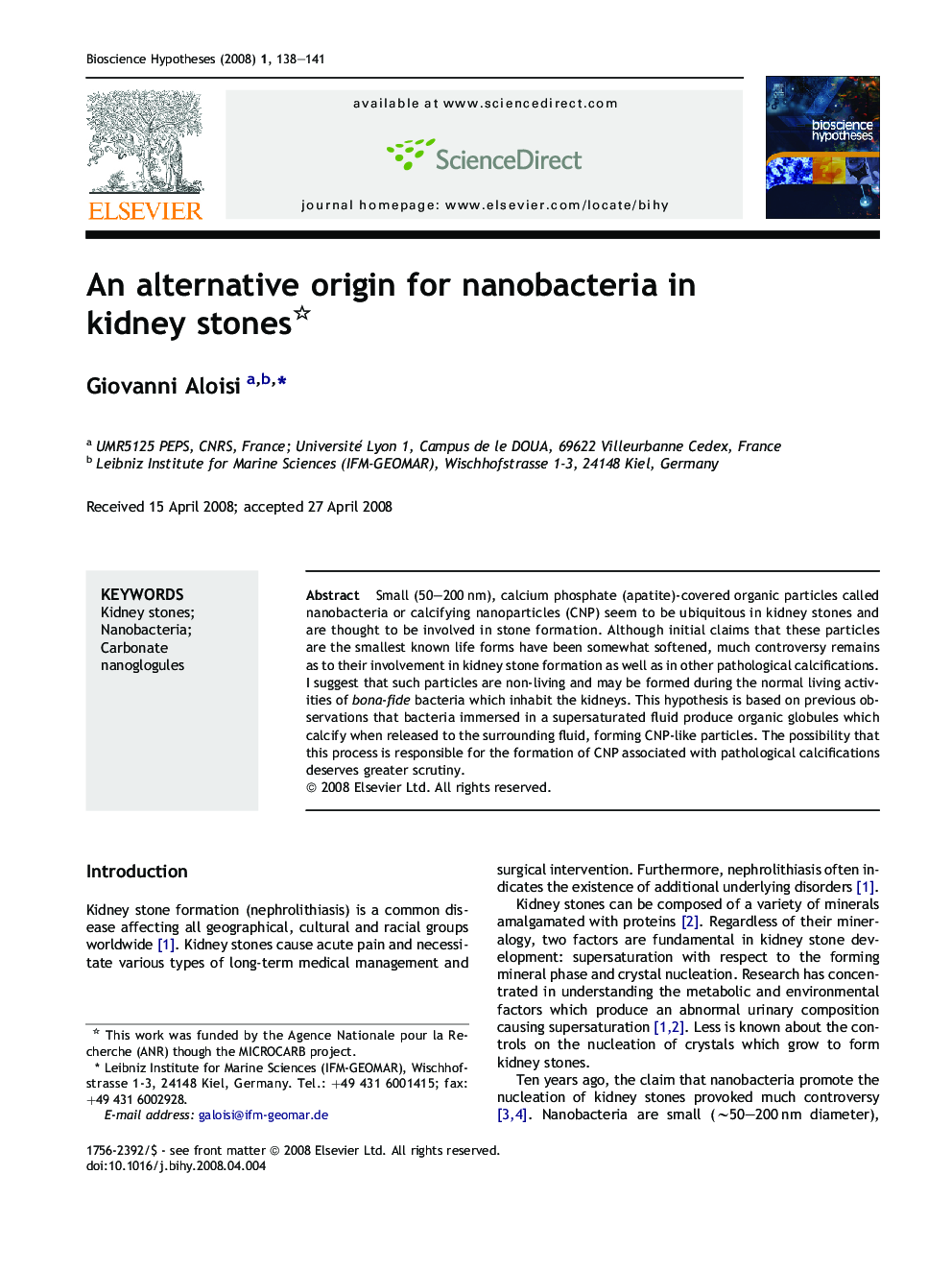| Article ID | Journal | Published Year | Pages | File Type |
|---|---|---|---|---|
| 2034960 | Bioscience Hypotheses | 2008 | 4 Pages |
Small (50–200 nm), calcium phosphate (apatite)-covered organic particles called nanobacteria or calcifying nanoparticles (CNP) seem to be ubiquitous in kidney stones and are thought to be involved in stone formation. Although initial claims that these particles are the smallest known life forms have been somewhat softened, much controversy remains as to their involvement in kidney stone formation as well as in other pathological calcifications. I suggest that such particles are non-living and may be formed during the normal living activities of bona-fide bacteria which inhabit the kidneys. This hypothesis is based on previous observations that bacteria immersed in a supersaturated fluid produce organic globules which calcify when released to the surrounding fluid, forming CNP-like particles. The possibility that this process is responsible for the formation of CNP associated with pathological calcifications deserves greater scrutiny.
